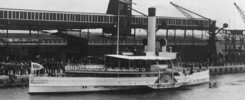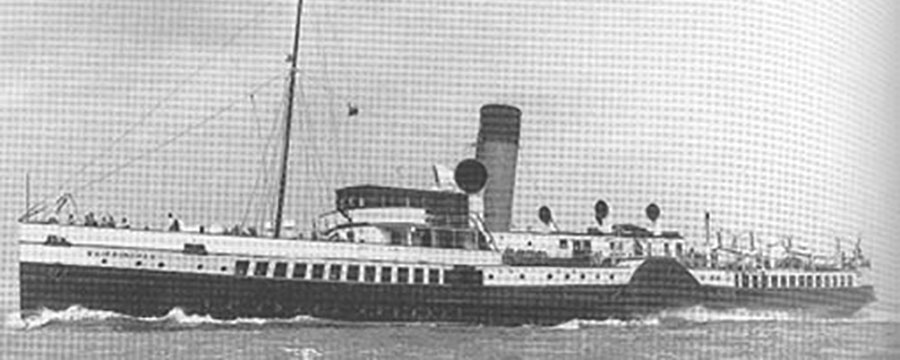
In 1930 two huge sisters, the paddle steamers Whippingham (pictured above) and Southsea, were built by Fairfield of Glasgow for the Southern Railway’s Portsmouth services. The railway had come in for some criticism in the 1920s for building their new steamers Shanklin (1924), Portsdown (1928) and Merstone (1928) as pretty much carbon copies of their pre-First World War paddlers like the Duchess of Norfolk (1911). With the Whippingham and Southsea, no such criticism could be levelled as, at 254 feet in length and with a gross tonnage of 825 tons, they were ships in a different class offering greatly enhanced passenger accommodation.
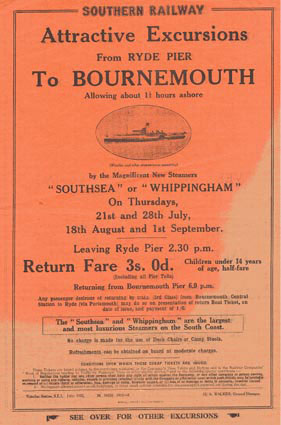
Although intended for use on the Portsmouth to Ryde ferry service, Whippingham and Southsea were also designed with the excursion trade in mind and so spent much of each summer running to the piers at Sandown and Shanklin, around the Isle of Wight, to Bournemouth and sometimes further afield to Weymouth. The steamer notice above advertises excursions from Ryde to Bournemouth on some Thursdays in the school holidays from mid July to the beginning of September in 1932. It makes the quite justified claim that the ships “are the largest and most luxurious Steamers on the South Coast” and adds “No charge is made for the use of Deck Chairs and Camp Stools”. This would doubtless have been a great relief to passengers who had just shelled out a massive three shillings (15p) for the return cruise to Bournemouth, a modest fare for a day trip even by the standards of the 1930s.
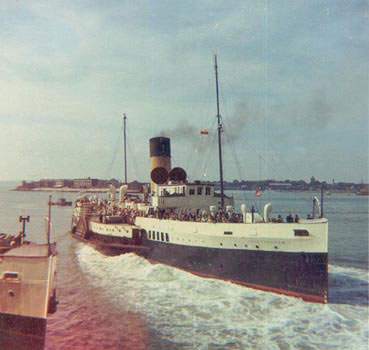
Whippingham leaving the Harbour Station at Portsmouth in the early 1960s. It was the almost invariable practice for the Portsmouth paddlers to berth starboard side to and then back out using their bow rudders either turning round in the harbour or sailing astern right out through the entrance before turning off Clarence Pier.
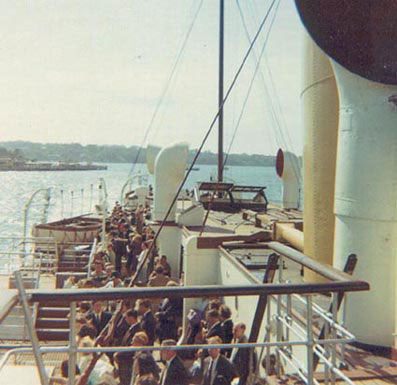
After the Second World War (in which the Southsea was sunk by a mine) the railway decided to abandon their longer excursions which required the ships to be manned and fitted out to sea-going Class III Passenger Certificate standards and henceforward operated their fleet only on Class IV Certificates on the Partially Smooth Waters inside the Isle of Wight for which there were lesser and hence cheaper Board of Trade requirements.
Whippingham was still used for excursions from time to time in the Solent and to Southampton particularly to view liners but these trips reduced as the years went by. Her real strength was her ability to help to clear the long queues on the piers at Ryde and Portsmouth at peak times with her large capacity for 1,183 passengers. There were many summer Saturdays each July and August when she carried over seven thousand passengers across the Solent and it is interesting to see what sort of revenue that would produce in today’s money. With the current day return fare from Portsmouth to Ryde priced at £7.20 and the period return at £13, seven thousand passengers would produce a revenue of around £50K for the one day’s work. Ten such Saturdays would produce a total revenue of £500K. Compare that with a day excursion around the Isle of Wight carrying, say, 600 passengers at £25 per head giving a revenue of £15K. However, Whippingham’s size and commensurate running costs did not make her an obvious choice to be rostered in the winter or at off-peak times when the numbers of intending passengers was more modest.
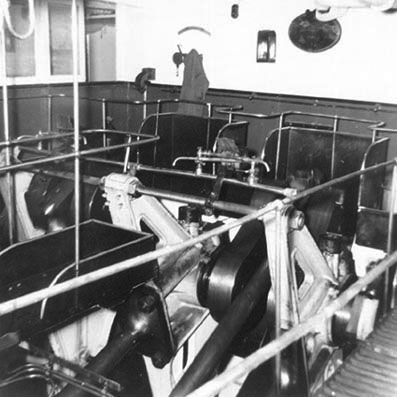
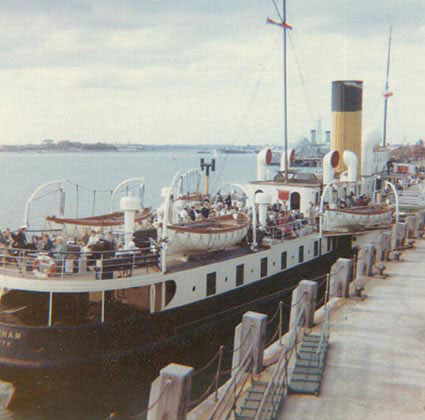
1962 was Whippingham’s last season. She was put up for sale in December and left Portsmouth for the last time on 17th May 1963 outward bound under tow for the breakers yard in Ghent in Belgium, the resting place of so many paddlers in the 1960s. One of Whippingham’s last masters was Capt Brian Wright who went on to become the company’s Marine Superintendent at Portsmouth.
The wonderful colour pictures above are from the Tony Horn collection.
Kingswear Castle returned to service in 2023 after the first part of a major rebuild which is designed to set her up for the next 25 years running on the River Dart. The Paddle Steamer Kingswear Castle Trust is now fund raising for the second phase of the rebuild. You can read more about the rebuilds and how you can help if you can here.
John Megoran

